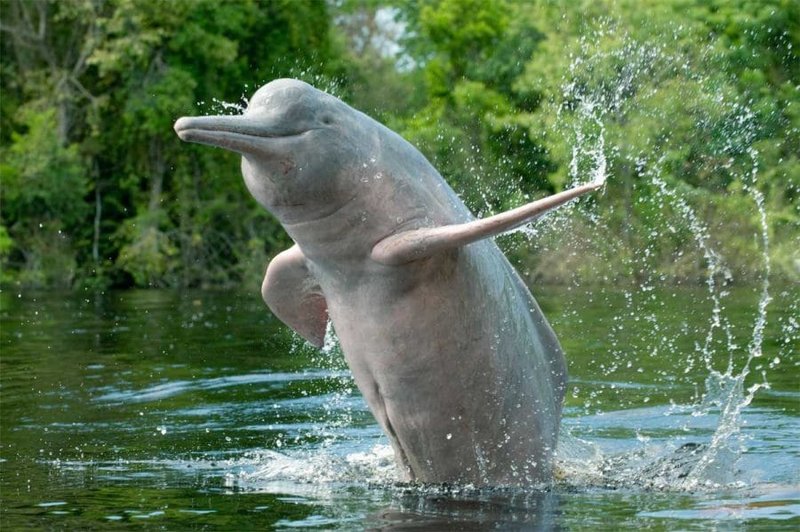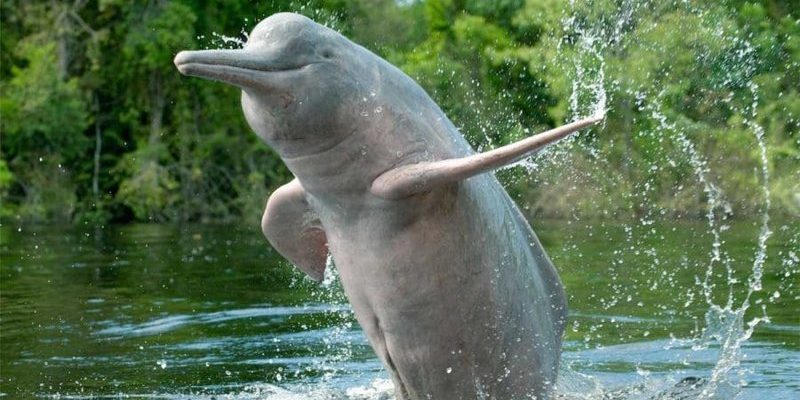
These playful, pinkish dolphins are more than just a charming sight for tourists and locals alike. They are crucial to the health of the Amazon river ecosystem. Just like a gardener tends to flowers, the Amazon river dolphin nurtures its environment in unique ways. Let’s dive into the important roles these dolphins play and why they matter to the overall health of their habitat.
Understanding the Amazon River Dolphin
The Amazon river dolphin is a distinct species, easily recognized by its pink hue and rounded forehead. These dolphins can grow to about 8 feet long and weigh up to 400 pounds. They have adapted perfectly to life in freshwater, with flexible necks that allow them to navigate through the dense underwater vegetation of the Amazon River.
One interesting thing about them is their social structure. Amazon river dolphins often live in small groups or pods, typically comprising a few individuals. They communicate through a variety of clicks, whistles, and other sounds, showing remarkable intelligence and social interaction. Here’s the thing: their playful nature often leads them to engage in acrobatics and games, making them a joy to watch.
Despite their friendly demeanor, these dolphins face several threats, from habitat destruction to pollution and fishing practices. Understanding their role in the ecosystem is crucial for their conservation.
The Role of Amazon River Dolphins in the Ecosystem
Amazon river dolphins play several vital roles in their ecosystem, acting as apex predators and crucial indicators of environmental health. They primarily feed on fish, crustaceans, and other aquatic organisms, which helps maintain a balanced food web. By keeping prey populations in check, they help prevent overgrazing of underwater vegetation, which is essential for water quality and other aquatic species.
Their presence indicates a healthy river system. When you see a thriving population of Amazon river dolphins, it’s often a sign that the ecosystem is functioning well. Conversely, a decline in their numbers can signal changes in water quality or habitat loss, prompting scientists to take action.
Furthermore, these dolphins contribute to nutrient cycling in their environment. As they consume various prey and later excrete waste, they help recycle nutrients back into the ecosystem, supporting the growth of plants and microorganisms. This cycle is crucial for maintaining the health of the river.
Interactions with Other Species
The Amazon river dolphin doesn’t exist in a vacuum. Their interactions with other species highlight their importance in the ecosystem. For instance, by preying on fish, these dolphins help regulate fish populations, which can influence the entire aquatic community.
In addition, the dolphins share their habitat with other wildlife, such as river turtles, caimans, and various bird species. Their playful behavior often captures the attention of these animals, potentially leading to unique inter-species interactions. For instance, turtles might use the dolphins’ playful splashes as cues for their own activities.
Moreover, local fishing communities often view these dolphins as a cultural symbol. Traditional stories and practices around the Amazon river dolphin can inspire conservation efforts, ensuring that both humans and wildlife can coexist peacefully.
The Threats Facing Amazon River Dolphins
While the Amazon river dolphin is an iconic species, they are under threat from several human activities. The most pressing danger is habitat loss, driven by deforestation and river pollution. When rainforests are cleared for agriculture or urban development, the dolphins lose essential breeding and feeding grounds.
Pollution is another significant issue. Agricultural runoff, plastic waste, and industrial discharges can contaminate their habitat, leading to health problems for the dolphins. They can absorb harmful substances through their skin or ingest toxins while feeding.
Additionally, accidental entanglement in fishing gear poses a serious risk. As fishing practices become more intensive, these dolphins can become trapped and unable to surface for air, leading to drowning. Conservation efforts are vital to help protect these gentle giants from these threats.
Conservation Efforts for the Amazon River Dolphin
Various organizations and local governments are working to protect the Amazon river dolphin and its habitat. Conservation efforts focus on several key areas, including habitat preservation, pollution reduction, and community engagement.
Habitat conservation is crucial. Protecting the river’s natural environment ensures that the dolphins have enough space to thrive. This includes enforcing regulations against deforestation and promoting sustainable practices that respect the ecosystem.
Reducing pollution is also essential. Initiatives aimed at cleaner agricultural practices and better waste management can significantly improve water quality in the Amazon River, benefiting not just the dolphins but all the species that call this habitat home.
Community involvement is another important aspect of conservation. Educating local populations about the value of the Amazon river dolphin and promoting eco-friendly tourism can foster a sense of stewardship within the community. When people understand the importance of these dolphins, they are more likely to participate in conservation efforts.
The Future of Amazon River Dolphins
Looking ahead, the future of Amazon river dolphins depends on our collective actions. Continued conservation efforts are critical, but they need support from everyone. Local communities, governments, and international organizations must collaborate to create effective strategies that safeguard these dolphins.
As awareness increases about the challenges faced by the Amazon river dolphin, more people are stepping up to help. Whether through directing funding, supporting research, or promoting eco-tourism, each action can contribute to their survival.
You might wonder what you can do. Even if you’re far from the Amazon, spreading awareness about this unique species can make a difference. Supporting organizations that focus on dolphin conservation is a great way to contribute. Every little bit helps in the fight to protect these incredible creatures and the ecosystems they support.
Why the Amazon River Dolphin Matters
So, why should we care about the Amazon river dolphin? Beyond their adorable appearance and playful nature, they serve as a key indicator of the health of the Amazon river ecosystem. Protecting them is a way of protecting the entire environment they inhabit.
In an increasingly globalized world, we often forget how interconnected everything is. The fate of the Amazon river dolphin can reflect the state of our planet’s well-being. By working to conserve this species, we contribute to maintaining biodiversity and the health of our shared ecosystems.
To wrap it up, the Amazon river dolphin’s role in marine ecosystems is vast, interwoven with many aspects of life in the Amazon River. By understanding their importance and advocating for their protection, we can help ensure a thriving future for these remarkable creatures and the environment they call home.

